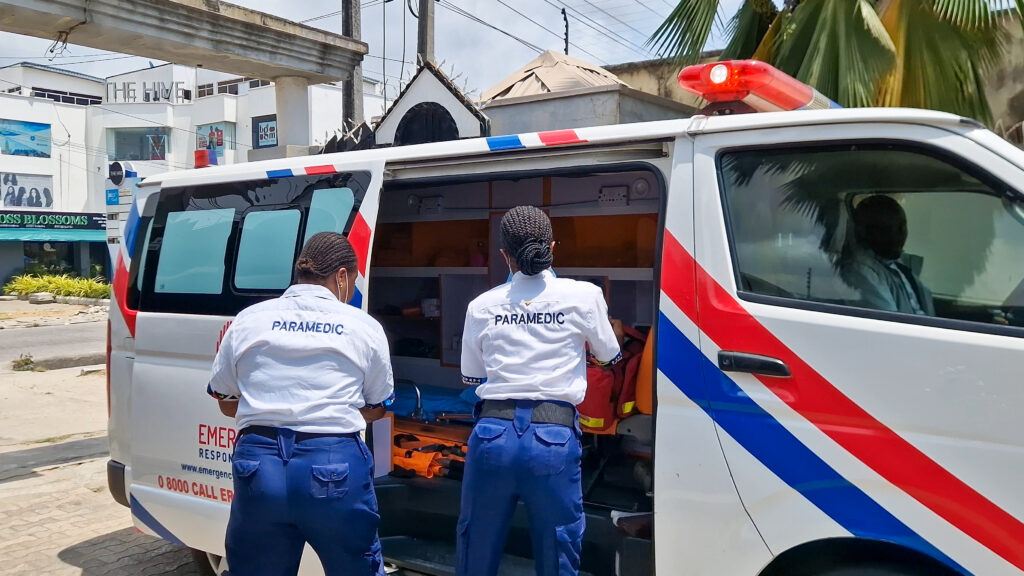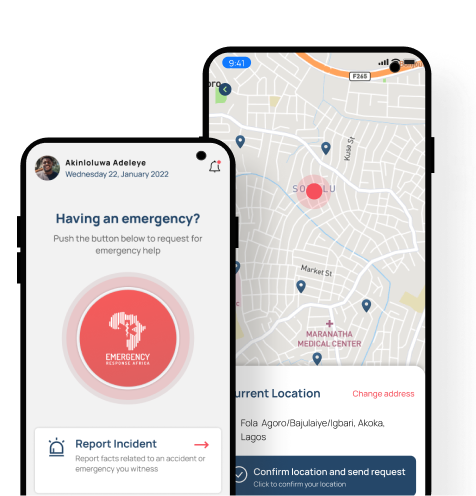While many people recognize ambulances from the outside, few know what’s inside. Each vehicle contains a carefully selected set of medical tools designed to stabilize, monitor, and transport patients safely.
From defibrillators that restart hearts to oxygen systems that restore breathing, every item plays a vital role in bridging the gap between crisis and care.
In this article, we highlight 10 essential items you’ll find inside every professionally operated ambulance in Nigeria.
Whether you’re curious, preparing for a health emergency, or evaluating ambulance services, this guide breaks down the critical gear that makes effective emergency response possible.
1. Patient Transport Stretcher
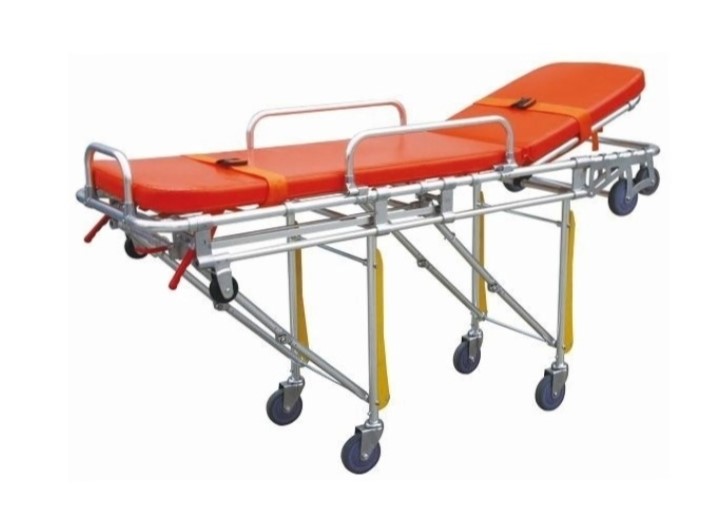
A patient stretcher is the centerpiece of an ambulance. It provides a secure and stable surface for transporting patients from the scene of an emergency to the hospital. Designed for mobility and comfort, stretchers come with adjustable frames, safety straps, and wheels with locking mechanisms to ensure smooth and safe transfer.
Modern ambulance stretchers are also height-adjustable and may be equipped with hydraulic systems to assist paramedics in loading and unloading patients without unnecessary strain. Some even have shock-absorption features to reduce further injury during bumpy rides.
2. Oxygen Delivery System
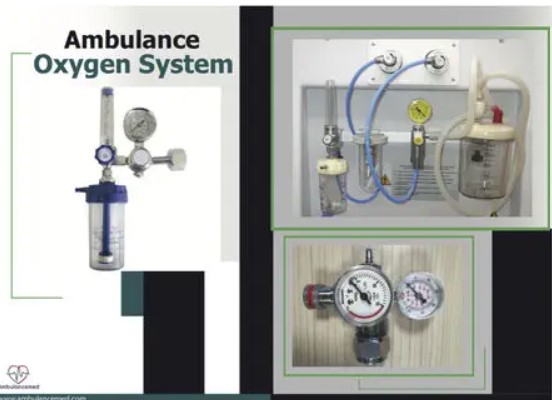
Oxygen is one of the most frequently used emergency interventions, and every ambulance is equipped to deliver it immediately. Whether a patient is having difficulty breathing, experiencing a cardiac event, or suffering from shock, oxygen therapy can stabilize vital functions and buy critical time before reaching the hospital.
Ambulances carry oxygen cylinders secured in place to prevent movement during transport. These are connected to flow meters, nasal cannulas, and oxygen masks that allow responders to deliver the right concentration of oxygen depending on the patient’s condition.
In more serious cases, non-rebreather masks or bag-valve masks may be used to provide higher levels of oxygen. This system is especially crucial for patients with respiratory conditions like asthma, COVID-19, or trauma-related breathing difficulties.
3. Automated External Defibrillator (AED)
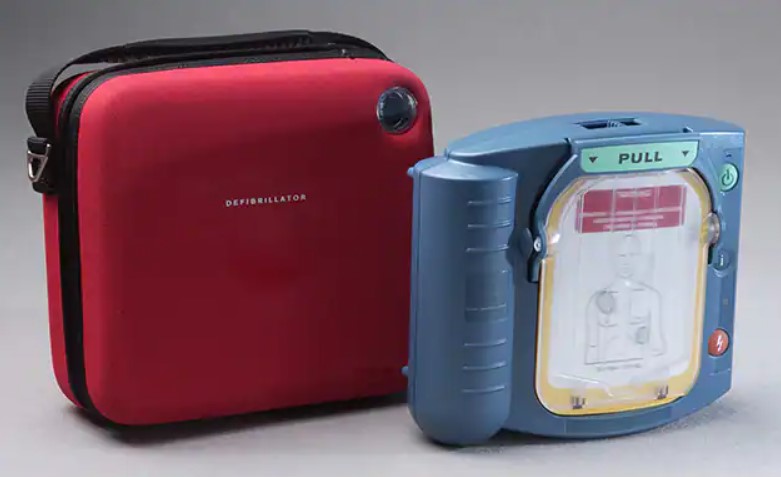
Sudden cardiac arrest is one of the leading causes of pre-hospital deaths, and timing is everything. Most ambulances carry an Automated External Defibrillator (AED) to restore normal heart rhythm in patients experiencing life-threatening arrhythmias such as ventricular fibrillation.
AEDs are compact, battery-powered devices designed for quick use in high-pressure situations. They come with adhesive electrode pads that attach to the patient’s chest and deliver a controlled electric shock when needed. The device analyzes the heart’s rhythm and guides the responder step-by-step, reducing human error during critical moments.
Many modern AEDs also feature visual and audio prompts, making them effective even for less experienced users. In the hands of trained paramedics, AEDs dramatically increase the chances of survival and recovery before reaching the hospital.
4. Suction Devices
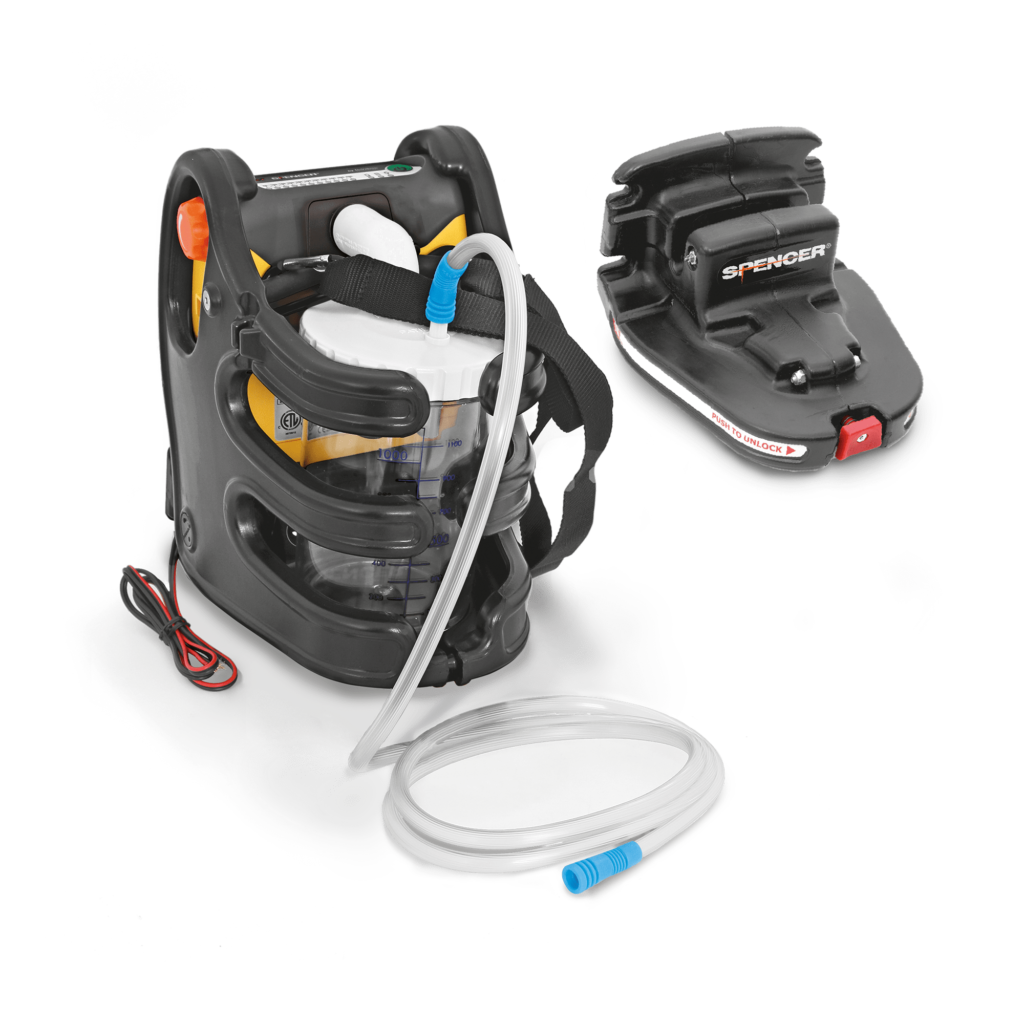
Suction devices are critical for clearing a patient’s airway during emergencies. They help remove blood, vomit, mucus, or other obstructions that could block breathing.
These handheld machines are especially important for trauma cases, unconscious patients, or those experiencing seizures. By keeping the airway clear, suction devices ensure oxygen flows properly to the lungs, preventing further complications.
Most ambulances carry battery-powered suction units that are easy to maneuver and use quickly. Paramedics are trained to operate them efficiently as they are essential for maintaining airway safety during transport.
5. Bag Valve Mask (BVM) or Ambu Bag
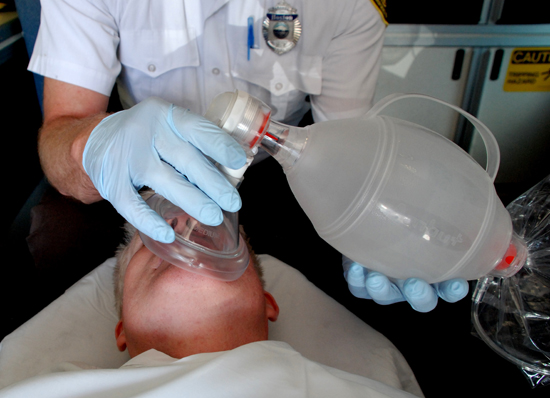
A Bag Valve Mask (BVM), also known as an Ambu bag, is a hand-held device used to help patients who are not breathing or not breathing adequately. It’s a critical tool in emergency care, allowing paramedics to manually provide ventilation by squeezing the self-inflating bag connected to a face mask. This pushes air or oxygen into the patient’s lungs.
BVMs are especially useful during cardiac arrest, respiratory failure, or trauma situations where normal breathing is compromised. Ambulances carry different sizes to suit adults, children, and infants. When connected to an oxygen cylinder, a BVM can deliver higher oxygen concentration, improving patient outcomes. It’s one of the simplest yet most life-saving tools inside every ambulance.
6. Emergency Medical Kit (Jump Bag)
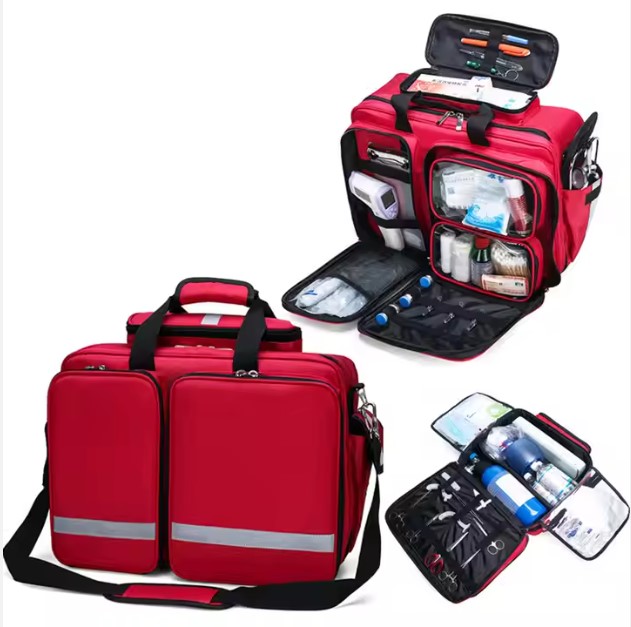
The Emergency Medical Kit, often called a Jump Bag, is a portable, all-in-one bag packed with essential tools for quick, on-scene treatment. It allows paramedics to respond immediately before moving the patient to the ambulance.
Inside, you’ll typically find items like wound dressings, gauze, bandages, antiseptics, IV supplies, syringes, gloves, scissors, stethoscopes, and basic medications. Some kits also include splints, glucose gels, and airway tools.
The Jump Bag is designed for speed and accessibility. In high-pressure situations, this kit ensures first responders can begin lifesaving care right at the scene, before accessing larger equipment inside the ambulance.
7. Spinal Immobilization Equipment
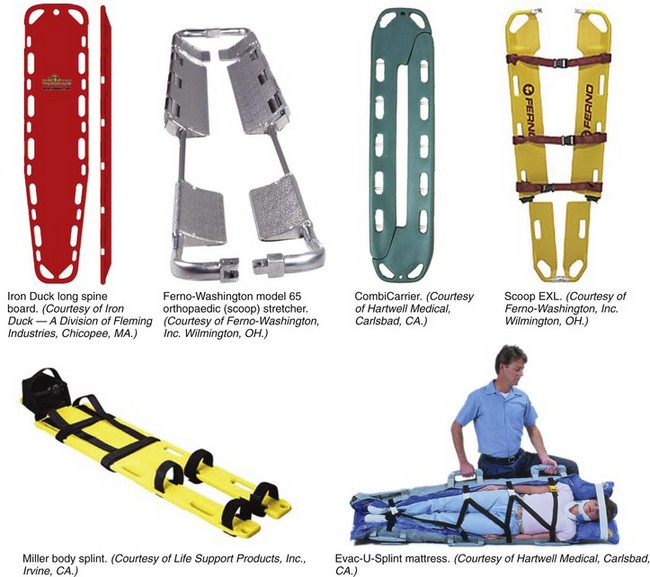
Spinal immobilization equipment is used to protect the spine of a patient who may have sustained head, neck, or back injuries, especially after falls, car accidents, or violent trauma. Improper movement can worsen such injuries, so stabilization is critical.
This equipment typically includes:
- Cervical Collars (C-Collars): Used to stabilize the neck and prevent head movement
- Spine Boards (Backboards): Long, rigid boards that allow patients to be lifted and moved without twisting the spine
- Head Immobilizers: Foam blocks or straps that secure the head in place while on the spine board
- Straps and Restraints: To keep the body aligned during transport
Paramedics use this setup to minimize the risk of spinal cord damage before and during movement to the hospital. It’s a crucial step in pre-hospital trauma care.
8. Monitoring Equipment
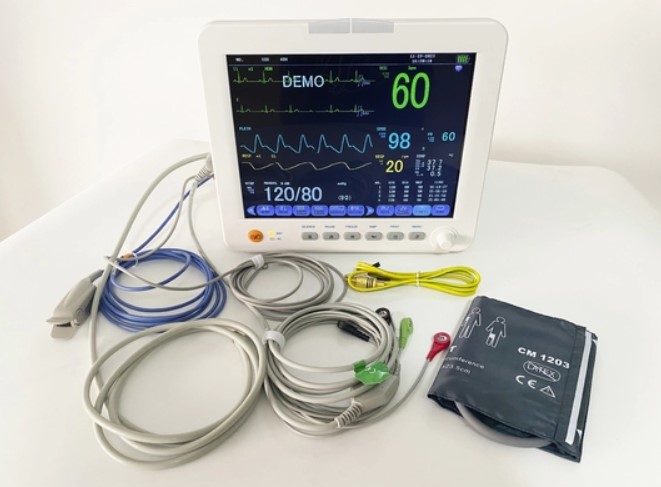
Monitoring equipment allows paramedics to continuously assess a patient’s vital signs during transport. These devices give real-time data that guides treatment decisions before reaching the hospital. In critical cases, early detection of abnormal vitals can be life-saving.
Every professionally equipped ambulance carries a multi-parameter patient monitor. This device tracks essential indicators such as heart rate, blood pressure, respiratory rate, and oxygen saturation (SpO₂). Some units may also include ECG monitoring to detect cardiac arrhythmias and portable glucometers to check blood sugar levels, especially in diabetic emergencies.
The ability to monitor vitals on the move helps paramedics detect any sudden changes and provide immediate interventions. These tools are especially vital during long-distance transfers or when stabilizing high-risk patients.
9. Personal Protective Equipment (PPE)

Protecting both the patient and the medical team is a top priority in any emergency situation. That’s why every ambulance is stocked with Personal Protective Equipment (PPE); items designed to reduce the risk of infection, contamination, or exposure to hazardous materials.
Standard PPE found in ambulances includes:
- Medical gloves for safe patient contact
- Face masks and N95 respirators for respiratory protection
- Protective gowns or aprons to shield against blood or bodily fluids
- Goggles or face shields to protect the eyes during high-risk procedures
- Hand sanitizers and disinfectant wipes for hygiene between cases
PPE is essential during infectious disease outbreaks, trauma scenes, or when treating patients with unknown medical histories. It ensures that responders can deliver care safely while preventing the spread of illness or infection.
10. Communication Devices and Documentation Tools
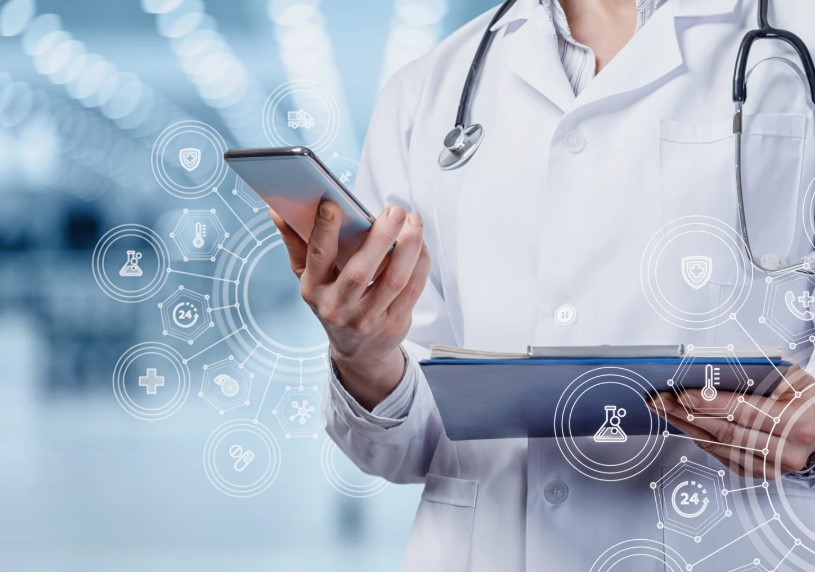
Reliable communication and accurate documentation are critical during any emergency response. Every ambulance is equipped with two-way radios, mobile phones, and sometimes GPS-enabled dispatch systems.
These tools keep paramedics connected with hospitals, control centers, and other responders to coordinate care, share patient status, and receive further instructions.
In addition to communication gear, documentation tools like patient care report forms, tablets, or electronic medical record (EMR) systems are used to log vital signs, treatment given, and observations made en route. This information ensures continuity of care once the patient arrives at the hospital.
Conclusion
Behind every successful emergency rescue is more than just a siren and a fast vehicle. It’s the gear inside and the trained hands using it that make the real difference.
Whether it’s to stabilize trauma victims or restart a failing heart, every item inside an ambulance plays a role in keeping patients alive and stable before they even get to the hospital.
However, having the right equipment is only half the story. What matters just as much is the consistency and readiness of the ambulance provider. At Emergency Response Africa (ERA), we ensure that every ambulance in our network is professionally stocked, staffed with trained responders, and ready to move, any time, any day.
If you’re looking to protect your family, workplace, or community, don’t wait until it’s too late. Choose an emergency provider you can count on.
Call Emergency Response Africa on 08000 2255 372 for emergency support or email contact@emergencyresponseafrica.com to learn more about getting started today.

